Do you have a question about the Yamaha TRX850 and is the answer not in the manual?
Handling precautions for asbestos to prevent health hazards.
Safety measures against petrol flammability, sparks, and open flames.
Hazards of toxic fumes from petrol and solvents, emphasizing ventilation.
Safety warnings regarding battery's explosive hydrogen gas and corrosive acid.
Risks of electric shock from power tools and electrical system components.
Location and importance of recording frame and engine numbers for security.
Guidance on using ID numbers to ensure correct parts purchase and avoid errors.
Procedure for checking and topping up engine/transmission oil levels on various models.
Steps to check front and rear brake fluid levels, including bike care and fluid type.
Instructions for checking coolant levels, mixture, and system for leaks.
Guidance on checking tyre pressures, tread depth, condition, and care.
Routine checks, adjustments, and lubrication for drive chain and sprockets to ensure longevity.
Procedure for checking spark plug condition, electrode gap, and adjustment.
How to check and adjust engine idle speed for optimal performance.
Procedure for synchronizing carburettors to balance fuel/air mixture for each cylinder.
Steps for removing, cleaning, and reinstalling the air filter element.
Inspecting the fuel tank, tap, pump, and hoses for leaks or deterioration.
Step-by-step guide for changing engine oil and filter, including disposal advice.
How to visually check brake pad wear indicators without pad removal.
Routine general check of the brake system to ensure safety and discover problems early.
Procedure for checking and adjusting clutch lever freeplay for proper operation.
Basic checks for battery terminals, casing, and electrolyte level (if applicable).
Visual inspection of cast alloy wheels, tyres, and valve stems for damage.
How to check wheel bearings for play and smooth rotation, and signs of wear.
Verifying the function of sidestand and clutch cut-off switches for safety.
Importance of periodically checking all fasteners for proper tightness due to vibration.
Checking coolant level, system for leaks, and radiator condition.
Ensuring smooth operation of throttle and choke cables and adjusting freeplay.
Technical specifications for engine, clutch, transmission, and general data.
Specifications for camshaft lobe height, journal diameter, and runout.
Specifications for cylinder head warpage.
Specifications for valve stem diameter, guide clearance, and spring dimensions.
Specifications for cylinder bore, warpage, and taper.
Specifications for piston diameter, clearances, and pin dimensions.
Specifications for piston ring width, thickness, end gap, and groove clearance.
Specifications for clutch plate thickness, spring free length, and warpage.
Specifications for oil pump rotor clearances.
Specifications for big-end side clearance and oil clearance.
Specifications for main bearing oil clearance and crankshaft runout.
Gear ratios, shaft runout, and selector fork shaft runout specifications.
Torque specifications for various engine, frame, and component bolts.
Overview of the engine/transmission unit, lubrication system, and final drive.
List of maintenance tasks that can be performed without engine removal.
Components and assemblies that necessitate engine removal for access.
Factors to consider when determining if a major engine overhaul is needed.
Step-by-step guide for removing and installing the engine, emphasizing safety precautions.
Procedure for removing and installing the valve cover, including gasket replacement.
Detailed steps for removing, inspecting, and reinstalling camshafts and followers.
Procedures for removing, inspecting, and installing the starter clutch and idle/reduction gear.
Steps for removing, inspecting, and installing gearchange mechanism external components.
Guide for removing, inspecting, and reinstalling the engine's oil pumps.
Procedures for removing and installing the oil tank for specific models.
Steps for removing, inspecting, and installing the oil sump, strainer, and relief valve.
Procedures for removing, inspecting, and installing balancer shafts.
Detailed steps for splitting and reassembling the crankcase halves.
General information on main and connecting rod bearings and factors affecting their life.
Procedures for removing, inspecting, and installing connecting rods.
Steps for removing, inspecting, and installing the crankshaft and main bearings.
Procedures for removing, inspecting, and installing transmission shafts and bearings.
Steps for removing, inspecting, and installing the selector drum and forks.
Procedure for starting the engine after overhaul, including checks and running-in.
Guidance on the proper running-in procedure for new or overhauled engines.
Specifications for coolant, radiator, fan switch, sensor, thermostat, and torque settings.
Details on coolant mixture type and capacity.
Specification for radiator cap valve opening pressure.
Specifications for cooling fan cut-in and cut-out temperatures.
Resistance specifications for coolant temperature sensors at various temperatures.
Specifications for thermostat opening temperature and valve lift.
Torque specifications for cooling system components.
Overview of the cooling system's function, components, and operation.
Steps for removing and installing the coolant reservoir, including draining.
Procedures for checking and renewing the cooling fan motor and fan switch.
How to check and renew the coolant temperature gauge, warning light, and sender.
Steps for removing, checking, and installing the thermostat housing and thermostat.
Procedures for removing and installing the radiator, including draining and cleaning.
How to check, remove, and install the water pump assembly.
Steps for removing and installing coolant hoses, including clamp and union checks.
Specifications for fuel grade, tank capacity, reserve, and tyre information.
Details on fuel grade and tank capacity including reserve volumes.
Type, ID mark, pilot screw setting, fuel level, idle speed, jet sizes, and needle specifications.
Specific main jet, main air jet, jet needle, needle jet, and pilot air jet sizes.
Resistance specifications for the fuel level sender at full and empty tank states.
Torque specifications for exhaust system components.
Overview of the fuel system and general safety precautions for working with fuel.
Procedures for removing and installing the fuel tank and fuel tap(s) on various models.
Steps for removing and installing the air filter housing.
Information on adjusting idle fuel/air mixture for emission control.
General information on when carburettor overhaul might be required and preparatory steps.
Step-by-step guide for removing and installing the carburettors.
Procedures for disassembling, cleaning, and inspecting carburettor components.
Recommendations for professional cleaning and repair of the fuel tank.
Procedures for checking and renewing the fuel pump.
General, ignition timing, pick-up coil, HT coils, and spark plug specifications.
Overview of the transistorized electronic ignition system components and safety precautions.
Steps to check the ignition system for faults by testing components and wiring.
Procedures for checking, removing, and installing the ignition HT coils.
How to check and replace the pick-up coil, including stator removal if necessary.
Steps for checking, removing, and installing the ignitor unit; dealer testing recommended for faults.
Information on ignition timing and how to check it dynamically using a stroboscope.
Procedures for checking, adjusting, and replacing the throttle position sensor.
Specifications for front forks (oil type, capacity, level, spring length) and rear suspension components.
Specifications for front fork oil type, capacity, level, and spring length.
Specifications for shock absorber spring free length and swingarm dimensions.
Specifications for swingarm side clearance and bearing spacer lengths.
Chain size, number of links, freeplay, and lubricant specifications.
Torque specifications for frame, suspension, and final drive components.
Overview of frame types, front and rear suspension systems, and drive mechanism.
Procedures for removing and installing footrests, brake pedal, and gearchange lever.
Guidelines for inspecting the frame for damage and potential repair methods.
Steps for removing and installing the brake pedal, including adjustment checks.
Procedures for removing and installing the gearchange lever assembly.
Steps for removing and installing the sidestand, including spring checks.
Procedures for removing and installing handlebars, levers, and associated controls.
Detailed steps for disassembling, inspecting, and reassembling front forks.
Procedures for removing and installing the steering stem, including bearing checks.
How to inspect and replace steering head bearings, including proper lubrication.
Steps for removing, inspecting, and installing the rear shock absorber.
Procedures for removing, inspecting, and installing rear suspension linkage components.
Adjusting front fork spring pre-load and damping, and rear shock absorber settings.
Inspecting the swingarm for wear and replacing bearings and bushes.
Steps for removing, cleaning, and installing the drive chain.
Information on identifying and working with riveted link chains.
How to check sprocket wear and replace front and rear sprockets.
Inspecting and replacing the rear sprocket coupling and rubber dampers.
Specifications for brake fluid, pad wear limit, caliper bore, disc thickness, master cylinder bore, and tyre information.
Specifications related to brake fluid, pads, discs, calipers, and master cylinders.
Specifications for wheel runout and tyre pressures.
Information on tyre pressures and specifications for different models.
Torque specifications for brake components and wheels.
Overview of the brake system, tyre types, and general precautions.
Step-by-step guide for replacing brake pads, including safety warnings about asbestos.
Procedures for removing, overhauling, and installing brake calipers, with safety warnings.
How to inspect brake discs for wear and damage, and procedures for removal and installation.
Steps for removing, overhauling, and installing the front brake master cylinder.
Procedures for removing, overhauling, and installing the rear brake master cylinder.
How to inspect and replace brake hoses, pipes, and unions, including banjo bolt torque.
Process for removing air bubbles from the brake system after component replacement or fluid change.
Guidelines for inspecting wheels for damage, runout, and alignment.
Steps for removing, inspecting, and installing wheel bearings, including lubrication.
Procedures for removing, inspecting, and installing front wheel bearings.
Steps for checking and replacing rear wheel bearings, including selection and installation.
How to check and replace the bearing in the sprocket coupling.
General information on tyres and recommendations for fitting new tyres.
Classification of tasks based on difficulty level for mechanics.
Overview of the chapter content and general advice for working with body parts.
Procedures for removing and installing the rider's and passenger's seats on various models.
Steps for removing and installing side covers on TDM, TRX, and XTZ models.
Procedures for removing and installing the fairing and associated components on TDM and TRX models.
Steps for removing and installing the front mudguard.
Specifications for battery capacity, voltage, charging system, alternator output, starter motor, and fuses.
Guidance on charging the battery, including recommended rates and emergency procedures.
Procedures for removing, installing, inspecting, and maintaining the battery.
General approach to diagnosing electrical system faults and necessary tools.
How to check for blown fuses and replace them with the correct rating.
Checking the operation of headlights, tail lights, brake lights, and turn signals.
Procedures for renewing headlight and auxiliary light bulbs, including handling precautions.
Steps to check the ignition system for faults by testing components and wiring.
Information on ignition timing and how to check it dynamically using a stroboscope.
Procedures for checking, adjusting, and replacing the throttle position sensor.
Steps for removing and installing the starter motor, including brush and commutator checks.
Detailed procedures for disassembling, inspecting, and reassembling the starter motor.
General information and precautions for testing the charging system.
Procedures for testing charging system leakage and output voltage.
Steps to check, remove, and install the alternator stator coil assembly.
How to check and replace the regulator/rectifier unit; dealer testing recommended.
Procedures for checking and replacing the horn assembly.
Steps for renewing turn signal bulbs, including lens and socket checks.
Procedures for removing and installing turn signal assemblies.
How to check and replace the front and rear brake light switches.
Steps for removing and installing the instrument cluster and speedometer cable.
Procedures for checking, removing, and installing the neutral switch.
How to check and replace the sidestand switch, including continuity tests.
Procedures for checking and replacing the clutch switch, including continuity tests.
How to check and replace the diode on XTZ models.
Procedures for checking and replacing the starter circuit cut-off relay.
Handling precautions for asbestos to prevent health hazards.
Safety measures against petrol flammability, sparks, and open flames.
Hazards of toxic fumes from petrol and solvents, emphasizing ventilation.
Safety warnings regarding battery's explosive hydrogen gas and corrosive acid.
Risks of electric shock from power tools and electrical system components.
Location and importance of recording frame and engine numbers for security.
Guidance on using ID numbers to ensure correct parts purchase and avoid errors.
Procedure for checking and topping up engine/transmission oil levels on various models.
Steps to check front and rear brake fluid levels, including bike care and fluid type.
Instructions for checking coolant levels, mixture, and system for leaks.
Guidance on checking tyre pressures, tread depth, condition, and care.
Routine checks, adjustments, and lubrication for drive chain and sprockets to ensure longevity.
Procedure for checking spark plug condition, electrode gap, and adjustment.
How to check and adjust engine idle speed for optimal performance.
Procedure for synchronizing carburettors to balance fuel/air mixture for each cylinder.
Steps for removing, cleaning, and reinstalling the air filter element.
Inspecting the fuel tank, tap, pump, and hoses for leaks or deterioration.
Step-by-step guide for changing engine oil and filter, including disposal advice.
How to visually check brake pad wear indicators without pad removal.
Routine general check of the brake system to ensure safety and discover problems early.
Procedure for checking and adjusting clutch lever freeplay for proper operation.
Basic checks for battery terminals, casing, and electrolyte level (if applicable).
Visual inspection of cast alloy wheels, tyres, and valve stems for damage.
How to check wheel bearings for play and smooth rotation, and signs of wear.
Verifying the function of sidestand and clutch cut-off switches for safety.
Importance of periodically checking all fasteners for proper tightness due to vibration.
Checking coolant level, system for leaks, and radiator condition.
Ensuring smooth operation of throttle and choke cables and adjusting freeplay.
Technical specifications for engine, clutch, transmission, and general data.
Specifications for camshaft lobe height, journal diameter, and runout.
Specifications for cylinder head warpage.
Specifications for valve stem diameter, guide clearance, and spring dimensions.
Specifications for cylinder bore, warpage, and taper.
Specifications for piston diameter, clearances, and pin dimensions.
Specifications for piston ring width, thickness, end gap, and groove clearance.
Specifications for clutch plate thickness, spring free length, and warpage.
Specifications for oil pump rotor clearances.
Specifications for big-end side clearance and oil clearance.
Specifications for main bearing oil clearance and crankshaft runout.
Gear ratios, shaft runout, and selector fork shaft runout specifications.
Torque specifications for various engine, frame, and component bolts.
Overview of the engine/transmission unit, lubrication system, and final drive.
List of maintenance tasks that can be performed without engine removal.
Components and assemblies that necessitate engine removal for access.
Factors to consider when determining if a major engine overhaul is needed.
Step-by-step guide for removing and installing the engine, emphasizing safety precautions.
Procedure for removing and installing the valve cover, including gasket replacement.
Detailed steps for removing, inspecting, and reinstalling camshafts and followers.
Procedures for removing, inspecting, and installing the starter clutch and idle/reduction gear.
Steps for removing, inspecting, and installing gearchange mechanism external components.
Guide for removing, inspecting, and reinstalling the engine's oil pumps.
Procedures for removing and installing the oil tank for specific models.
Steps for removing, inspecting, and installing the oil sump, strainer, and relief valve.
Procedures for removing, inspecting, and installing balancer shafts.
Detailed steps for splitting and reassembling the crankcase halves.
General information on main and connecting rod bearings and factors affecting their life.
Procedures for removing, inspecting, and installing connecting rods.
Steps for removing, inspecting, and installing the crankshaft and main bearings.
Procedures for removing, inspecting, and installing transmission shafts and bearings.
Steps for removing, inspecting, and installing the selector drum and forks.
Procedure for starting the engine after overhaul, including checks and running-in.
Guidance on the proper running-in procedure for new or overhauled engines.
Specifications for coolant, radiator, fan switch, sensor, thermostat, and torque settings.
Details on coolant mixture type and capacity.
Specification for radiator cap valve opening pressure.
Specifications for cooling fan cut-in and cut-out temperatures.
Resistance specifications for coolant temperature sensors at various temperatures.
Specifications for thermostat opening temperature and valve lift.
Torque specifications for cooling system components.
Overview of the cooling system's function, components, and operation.
Steps for removing and installing the coolant reservoir, including draining.
Procedures for checking and renewing the cooling fan motor and fan switch.
How to check and renew the coolant temperature gauge, warning light, and sender.
Steps for removing, checking, and installing the thermostat housing and thermostat.
Procedures for removing and installing the radiator, including draining and cleaning.
How to check, remove, and install the water pump assembly.
Steps for removing and installing coolant hoses, including clamp and union checks.
Specifications for fuel grade, tank capacity, reserve, and tyre information.
Details on fuel grade and tank capacity including reserve volumes.
Type, ID mark, pilot screw setting, fuel level, idle speed, jet sizes, and needle specifications.
Specific main jet, main air jet, jet needle, needle jet, and pilot air jet sizes.
Resistance specifications for the fuel level sender at full and empty tank states.
Torque specifications for exhaust system components.
Overview of the fuel system and general safety precautions for working with fuel.
Procedures for removing and installing the fuel tank and fuel tap(s) on various models.
Steps for removing and installing the air filter housing.
Information on adjusting idle fuel/air mixture for emission control.
General information on when carburettor overhaul might be required and preparatory steps.
Step-by-step guide for removing and installing the carburettors.
Procedures for disassembling, cleaning, and inspecting carburettor components.
Recommendations for professional cleaning and repair of the fuel tank.
Procedures for checking and renewing the fuel pump.
General, ignition timing, pick-up coil, HT coils, and spark plug specifications.
Overview of the transistorized electronic ignition system components and safety precautions.
Steps to check the ignition system for faults by testing components and wiring.
Procedures for checking, removing, and installing the ignition HT coils.
How to check and replace the pick-up coil, including stator removal if necessary.
Steps for checking, removing, and installing the ignitor unit; dealer testing recommended for faults.
Information on ignition timing and how to check it dynamically using a stroboscope.
Procedures for checking, adjusting, and replacing the throttle position sensor.
Specifications for front forks (oil type, capacity, level, spring length) and rear suspension components.
Specifications for front fork oil type, capacity, level, and spring length.
Specifications for shock absorber spring free length and swingarm dimensions.
Specifications for swingarm side clearance and bearing spacer lengths.
Chain size, number of links, freeplay, and lubricant specifications.
Torque specifications for frame, suspension, and final drive components.
Overview of frame types, front and rear suspension systems, and drive mechanism.
Procedures for removing and installing footrests, brake pedal, and gearchange lever.
Guidelines for inspecting the frame for damage and potential repair methods.
Steps for removing and installing the brake pedal, including adjustment checks.
Procedures for removing and installing the gearchange lever assembly.
Steps for removing and installing the sidestand, including spring checks.
Procedures for removing and installing handlebars, levers, and associated controls.
Detailed steps for disassembling, inspecting, and reassembling front forks.
Procedures for removing and installing the steering stem, including bearing checks.
How to inspect and replace steering head bearings, including proper lubrication.
Steps for removing, inspecting, and installing the rear shock absorber.
Procedures for removing, inspecting, and installing rear suspension linkage components.
Adjusting front fork spring pre-load and damping, and rear shock absorber settings.
Inspecting the swingarm for wear and replacing bearings and bushes.
Steps for removing, cleaning, and installing the drive chain.
Information on identifying and working with riveted link chains.
How to check sprocket wear and replace front and rear sprockets.
Inspecting and replacing the rear sprocket coupling and rubber dampers.
Specifications for brake fluid, pad wear limit, caliper bore, disc thickness, master cylinder bore, and tyre information.
Specifications related to brake fluid, pads, discs, calipers, and master cylinders.
Specifications for wheel runout and tyre pressures.
Information on tyre pressures and specifications for different models.
Torque specifications for brake components and wheels.
Overview of the brake system, tyre types, and general precautions.
Step-by-step guide for replacing brake pads, including safety warnings about asbestos.
Procedures for removing, overhauling, and installing brake calipers, with safety warnings.
How to inspect brake discs for wear and damage, and procedures for removal and installation.
Steps for removing, overhauling, and installing the front brake master cylinder.
Procedures for removing, overhauling, and installing the rear brake master cylinder.
How to inspect and replace brake hoses, pipes, and unions, including banjo bolt torque.
Process for removing air bubbles from the brake system after component replacement or fluid change.
Guidelines for inspecting wheels for damage, runout, and alignment.
Steps for removing, inspecting, and installing wheel bearings, including lubrication.
Procedures for removing, inspecting, and installing front wheel bearings.
Steps for checking and replacing rear wheel bearings, including selection and installation.
How to check and replace the bearing in the sprocket coupling.
General information on tyres and recommendations for fitting new tyres.
Classification of tasks based on difficulty level for mechanics.
Overview of the chapter content and general advice for working with body parts.
Procedures for removing and installing the rider's and passenger's seats on various models.
Steps for removing and installing side covers on TDM, TRX, and XTZ models.
Procedures for removing and installing the fairing and associated components on TDM and TRX models.
Steps for removing and installing the front mudguard.
Specifications for battery capacity, voltage, charging system, alternator output, starter motor, and fuses.
Guidance on charging the battery, including recommended rates and emergency procedures.
Procedures for removing, installing, inspecting, and maintaining the battery.
General approach to diagnosing electrical system faults and necessary tools.
How to check for blown fuses and replace them with the correct rating.
Checking the operation of headlights, tail lights, brake lights, and turn signals.
Procedures for renewing headlight and auxiliary light bulbs, including handling precautions.
Steps to check the ignition system for faults by testing components and wiring.
Information on ignition timing and how to check it dynamically using a stroboscope.
Procedures for checking, adjusting, and replacing the throttle position sensor.
Steps for removing and installing the starter motor, including brush and commutator checks.
Detailed procedures for disassembling, inspecting, and reassembling the starter motor.
General information and precautions for testing the charging system.
Procedures for testing charging system leakage and output voltage.
Steps to check, remove, and install the alternator stator coil assembly.
How to check and replace the regulator/rectifier unit; dealer testing recommended.
Procedures for checking and replacing the horn assembly.
Steps for renewing turn signal bulbs, including lens and socket checks.
Procedures for removing and installing turn signal assemblies.
How to check and replace the front and rear brake light switches.
Steps for removing and installing the instrument cluster and speedometer cable.
Procedures for checking, removing, and installing the neutral switch.
How to check and replace the sidestand switch, including continuity tests.
Procedures for checking and replacing the clutch switch, including continuity tests.
How to check and replace the diode on XTZ models.
Procedures for checking and replacing the starter circuit cut-off relay.
| Displacement | 849 cc |
|---|---|
| Bore x Stroke | 89.5 mm x 67.5 mm |
| Compression Ratio | 10.5:1 |
| Transmission | 5-speed |
| Fuel System | Carburetor |
| Final Drive | Chain |
| Front Suspension | Telescopic fork |
| Front Brakes | Dual disc |
| Rear Brakes | Single disc |
| Length | 2, 120 mm |
| Frame | Steel |
| Rear Suspension | Swingarm with monoshock |
| Front Tire | 120/70-17 |
| Rear Tire | 160/60 ZR17 |

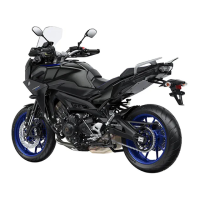
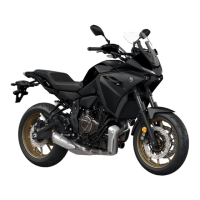
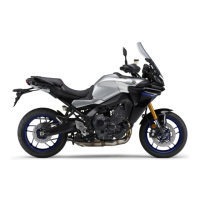
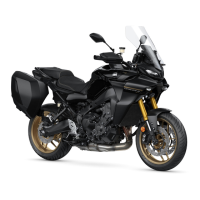
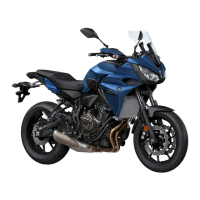
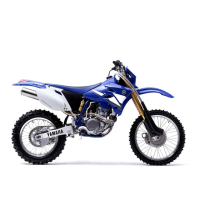


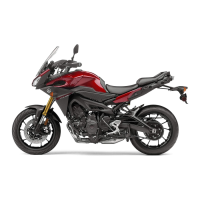


